|
Howard
Aircraft Corporation During World War Two
Chicago, IL
DuPage, IL
1937-1945
This page added 3-28-2025.
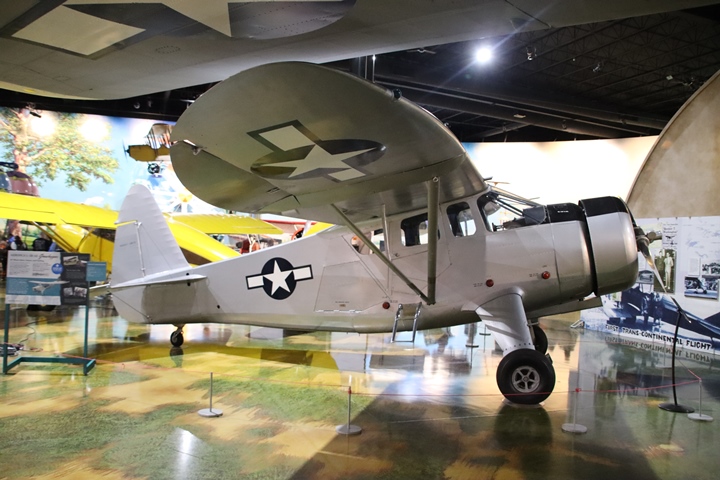
Sometimes one walks by an aircraft on
repeated visits to a museum and does not realize that it is a World War
Two veteran. Such was the case with this Howard GH-2 Bureau Number
32347 at the Air Zoo Aerospace and Science Museum in Kalamazoo, MI.
I had visited this museum many times over the years without really
paying any attention to it. Once I understood that this was a
World War Two aircraft built by the little known Howard Aircraft
Corporation, I decided that I needed to do a profile on this company and
its contribution to winning World War Two. Author's photo.
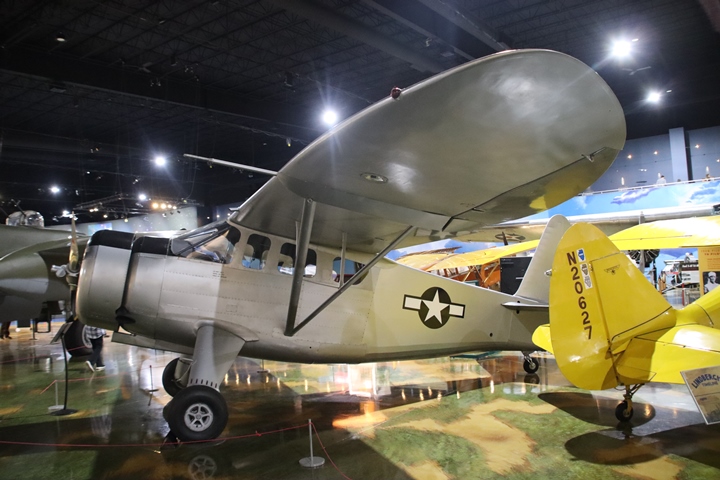
The GH-2 is the U.S. Navy's designation for
the Howard Aircraft Corporation's Model DGA-15. The Navy had
several different versions of the DGA-15. The GH-2 was used as an
air ambulance. There was also a GH-1 and GH-3 that were used as
utility aircraft. The aircraft designated as NH-1 were used as
instrument trainers. Author's photo.
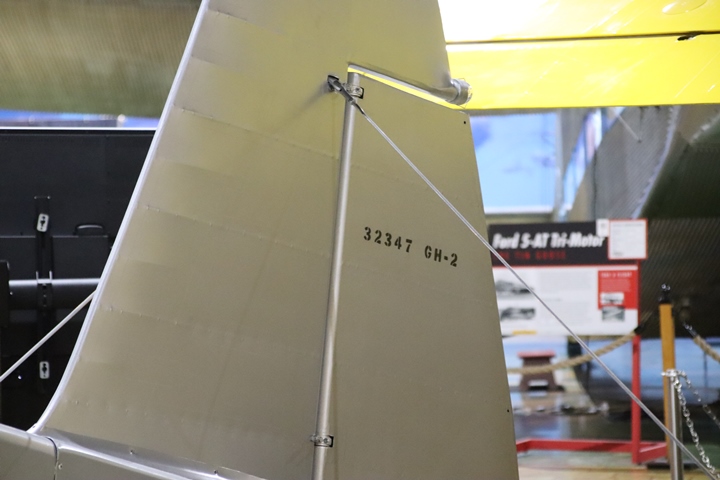
Bureau number 32347 was part of a block of
50 GH-2s ordered by the U.S. Navy. Author's photo.
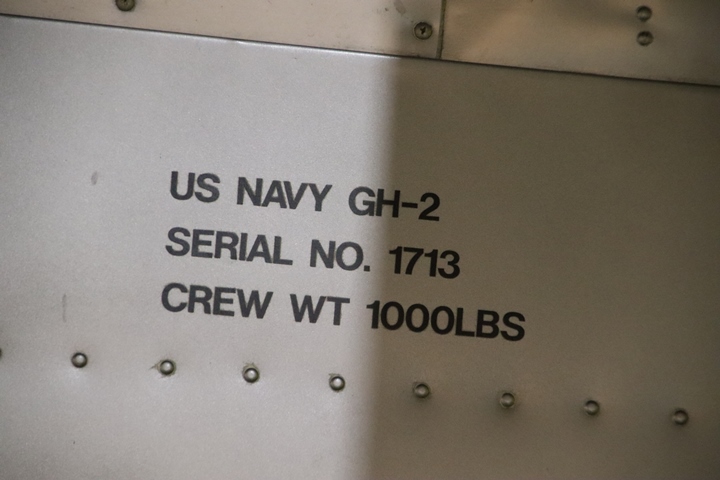
Bureau number 32347 was Howard's serial
number 1713. The DGA-15 series that the navy purchased was known
for its roominess and its ability to carry five passengers. This
feature allowed it to be used as an ambulance, utility aircraft, and
personnel transport.
The company was founded by
Ben Howard to produce commercial versions of his cross-country and
closed course racer aircraft known as "Mister Mulligan." This
became the company's DGA series of aircraft. The DGA-15 version
was the type purchased in quantity by the U.S. Navy during World War
Two. The company management decided to not return to civilian
production after the war and the company went out of business after the
last DGA-15 were delivered to the Navy in 1945.
Howard Aircraft
Corporation World War Two Products: Table 1 shows that the
company had $14,954,000 in major contracts for aircraft and parts during
World War Two. The company produced 784 military versions of the
DGA-15 for the U.S. Navy and 150 PT-23 trainers for the USAAF.
While the company was originally located on the south side of Chicago's
Midway Airport, production of its military aircraft was done in a
factory east of the newly built Naval Air Station at what is currently
the DuPage, IL airport. The employees would push the completed
aircraft across the road where Navy pilots would test fly the aircraft.
After acceptance by the Navy, the aircraft were flown of to their duty
stations. The historical record shows that Howard Aircraft
Corporation had 2,350 employees producing two aircraft per day once
production ramped up. They were paid an hourly rate of $1.75.
Table 1 - Howard
Aircraft Corporation's
Major World War
Two Contracts
The information below comes from the "Alphabetical Listing
of Major War Supply Contracts, June 1940 through September
1945." This was published by the Civilian Production
Administration, Industrial Statistics Division, Requirements
and Progress Branch January 21, 1946. |
|
Product - Customer |
Contract Number |
Contract Amount |
Award Date |
Completion
Date |
| Airplanes -
Navy |
NOS-92172 |
$958,000 |
11-1941 |
5-1932 |
| Airplanes -
USAAF |
535-AC-26981 |
$6,633,000 |
4-1942 |
11-1943 |
| Airplanes -
Navy |
NOA-1732 |
$3,878,000 |
5-1942 |
3-1944 |
| Airplane
Parts - Navy |
OA-236 |
$832,000 |
6-1942 |
7-1944 |
| Transport
Airplanes - Navy |
OA-1287 |
$2,653,000 |
7-1943 |
2-1945 |
| Total |
|
$14,954,000 |
|
|
|
Table 2 - Howard Aviation
Corporation Aircraft Purchased by the U.S. Navy |
|
Type |
Bureau Number |
Number |
|
GH-1 |
8006 thru 8028 |
23 |
|
NH-1 |
8028 |
1 |
|
GH-1 |
9769 thru 9770 |
2 |
|
GH-1 |
9775 |
1 |
|
GH-1 |
9779 |
1 |
|
GH-1 |
9781 |
1 |
|
GH-1 |
29376 thru 29550 |
175 |
|
GH-2 |
32336-32385 |
50 |
|
GH-2 |
32787-32936 |
150 |
|
NH-1 |
44905 thru 44920 |
16 |
|
GH-3 |
44921 thru 44922 |
2 |
|
NH-1 |
44923 thru 44934 |
12 |
|
GH-3 |
44935 thru 44937 |
3 |
|
NH-1 |
44938 |
1 |
|
GH-3 |
44939 |
1 |
|
NH-1 |
44940 |
1 |
|
GH-3 |
44941-45284 |
344 |
|
Total |
|
784 |
|
Table 3 - Howard Aviation
Corporation Aircraft Purchased by the U.S. Navy by Type |
|
Type |
Bureau Number |
Number |
| |
|
|
|
GH-1 |
8006 thru 8028 |
23 |
|
GH-1 |
9769 thru 9770 |
2 |
|
GH-1 |
9775 |
1 |
|
GH-1 |
9779 |
1 |
|
GH-1 |
9781 |
1 |
|
GH-1 |
29376 thru 29550 |
175 |
| Total
GH-1 |
|
203 |
| |
|
|
|
GH-2 |
32336-32385 |
50 |
|
GH-2 |
32787-32936 |
150 |
| Total
GH-2 |
|
200 |
| |
|
|
|
GH-3 |
44921 thru 44922 |
2 |
|
GH-3 |
44935 thru 44937 |
3 |
|
GH-3 |
44939 |
1 |
|
GH-3 |
44941-45284 |
344 |
| Total
GH-3 |
|
350 |
| |
|
|
|
NH-1 |
8028 |
1 |
|
NH-1 |
44905 thru 44920 |
16 |
|
NH-1 |
44923 thru 44934 |
12 |
|
NH-1 |
44938 |
1 |
|
NH-1 |
44940 |
1 |
| Total
NH-1 |
|
31 |
| Grand
Total |
|
784 |
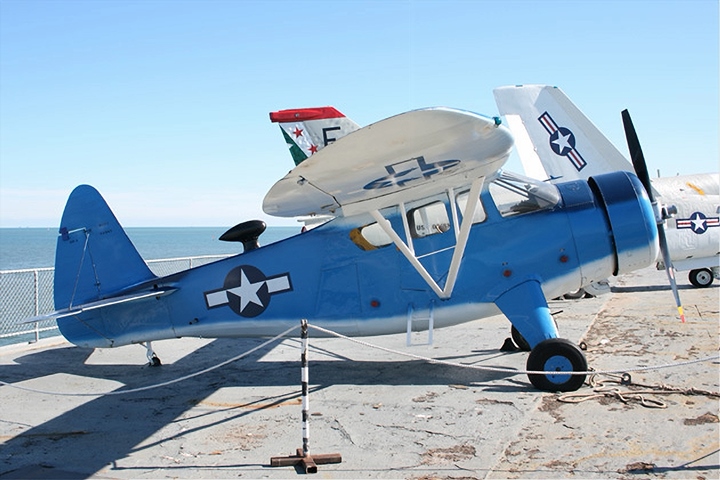
I visited the USS Lexington in Corpus
Christi, TX in October 2009, and photographed this Howard GH-3 on the
deck of the aircraft carrier. Author's photo.
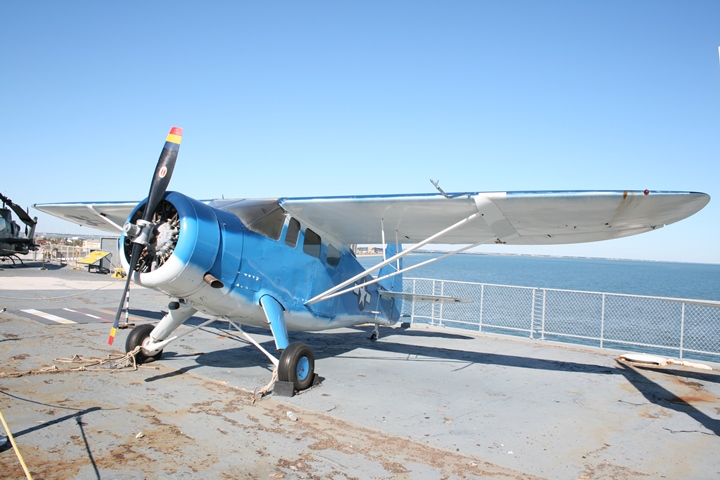
Author's photo.
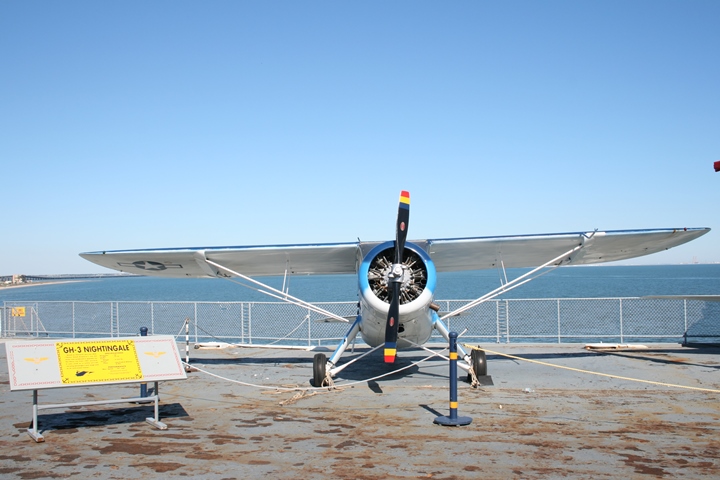
The reason the GH-3 is not level is that the
right strut has collapsed. Author's photo.
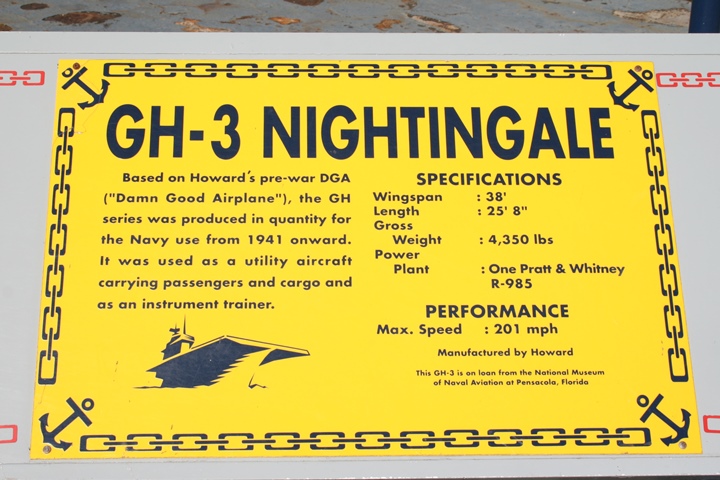
This information placard notes that the GH-3
is part of the collection of the National Museum of Naval Aviation in
Pensacola, FL. The Google Earth image below no longer shows the
GH-3 on the flight deck. It may be on display now in the hangar
deck or at another museum. I did not see it when I visited the
National Museum of Naval Aviation in 2023. Author's photo.
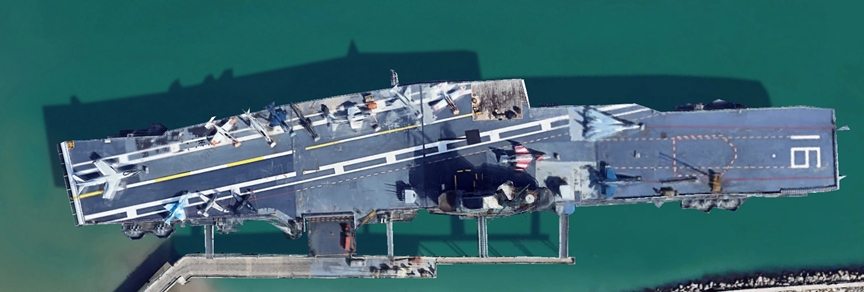
Image courtesy of Google Earth.
Howard also built 150
PT-23A trainers under license from Fairchild for the USAAF. These
were serial numbers 42-277 thru 42-426. The aircraft shown below is on
display at the Air Zoo Aerospace and Science Museum.
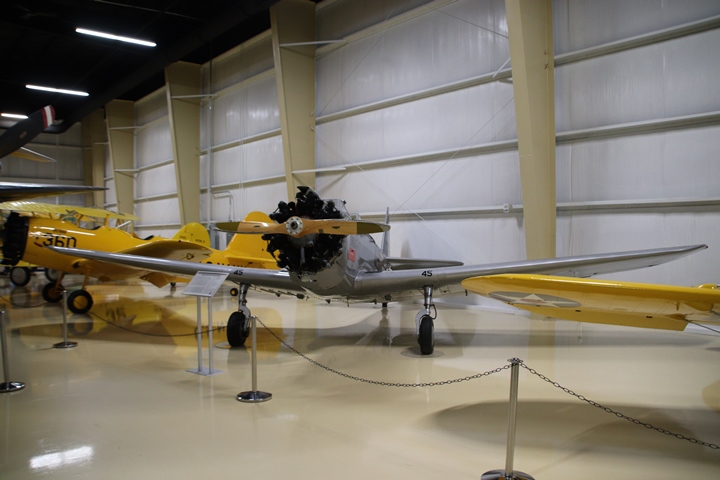
The PT-23 used a Fairchild PT-19 fuselage
that had been modified for a Continental R-670 radial engine.
Author's photo.
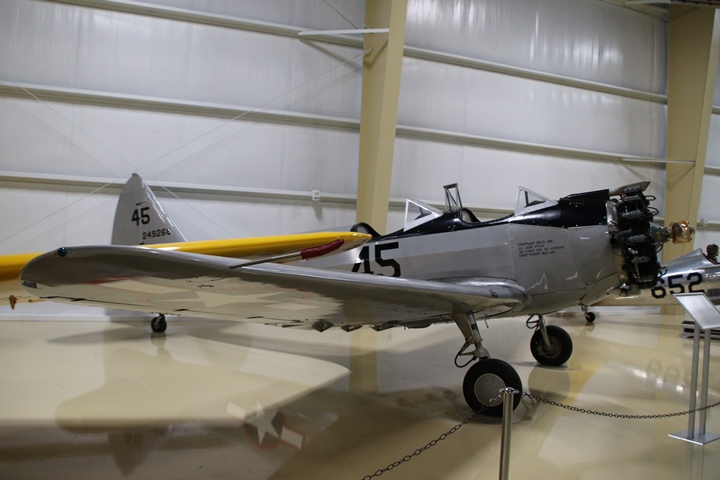
Howard Aircraft Corporation built 150 PT-23
aircraft like this one during World War Two. Author's photo.
The Howard World War Two
DuPage, IL Plant: The
factory in DuPage is no longer in existence. However, it is still
possible to see where the naval air station and factory were located.
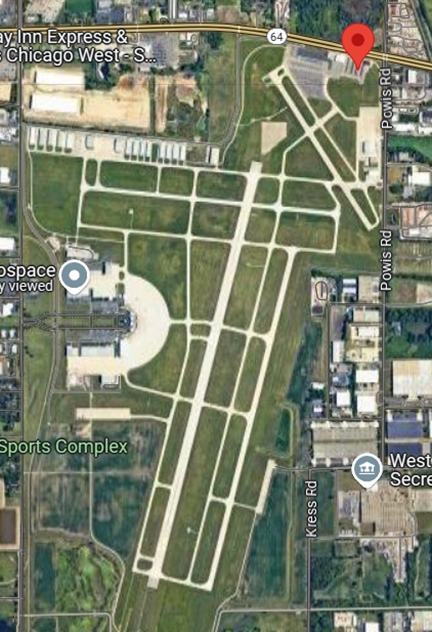
This Google Maps satellite view shows the
current DuPage, IL airport. The original naval air station was up
in the corner where the red arrow is located. The rest of the
airport has been added since World War Two to serve the local area.
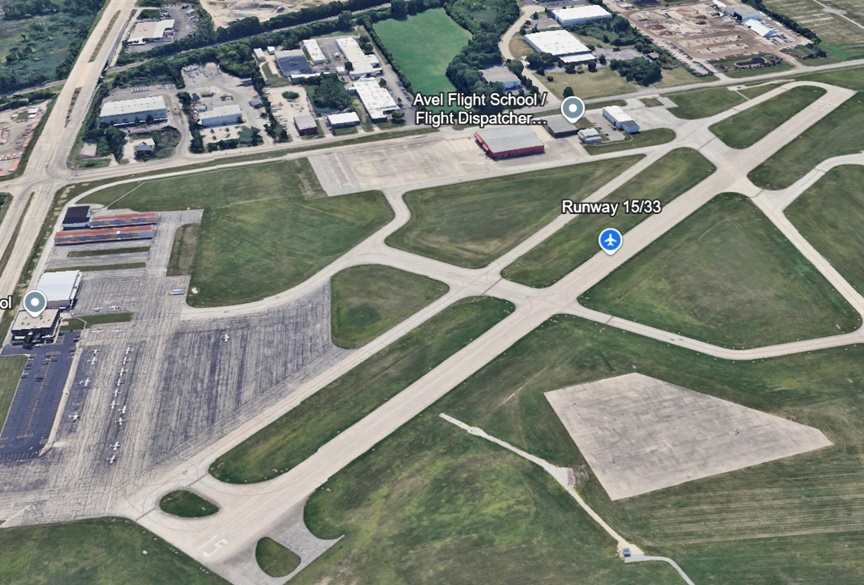
This Google Earth view is looking east.
The building with the black roof in the upper left corner is one of the
original navy hangars. Back during World War Two, the area would
have been undeveloped with two lane country roads.
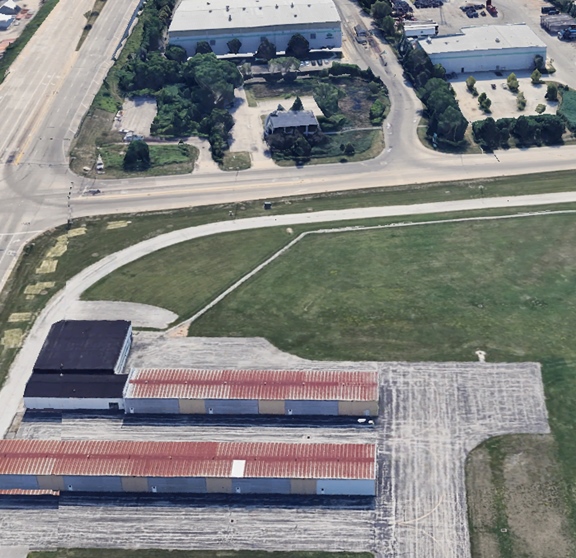
This gives a better view of the navy hangar.
Since the war, T-hangars have been added to it. Across what is
currently a four lane road was the location of the Howard factory.
It has been replaced by more modern buildings. It was across the
former two lane county road that the Howard employees would have pushed
the newly produced navy and army aircraft for acceptance at the naval
air station. Image courtesy of Google Earth.
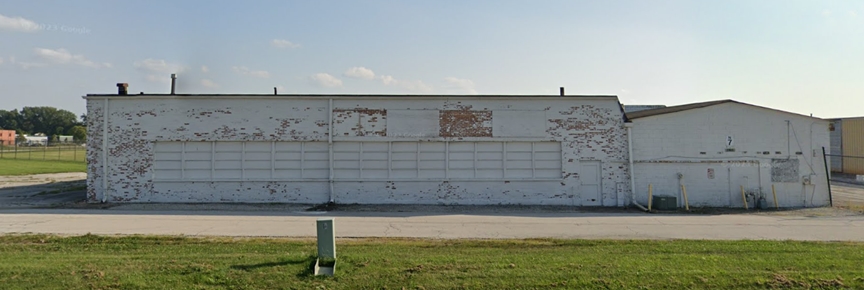
This historical record indicates that the
navy hangars were constructed of brick. Many of the original red
bricks can be seen as the white paint deteriorates with age. Image
courtesy of Google Maps.
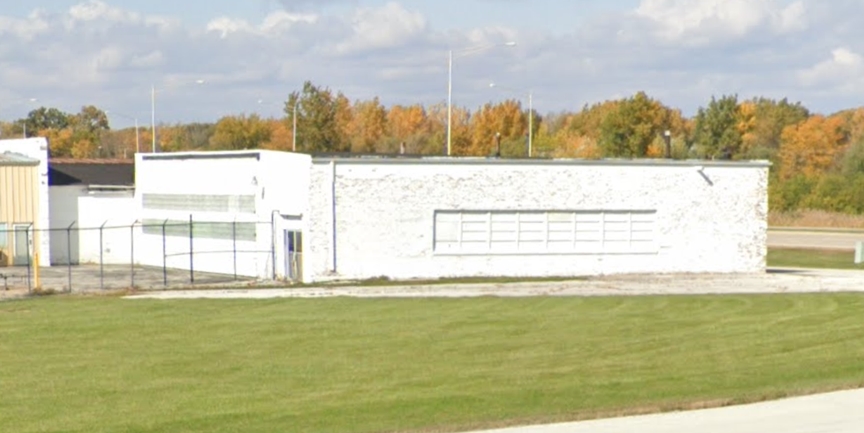
It was across this road and on the open ground shown above that the
Howard employees would push two aircraft a day to the navy hangar.
Image courtesy of Google Maps.
|















